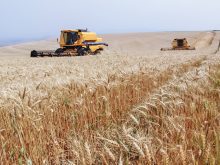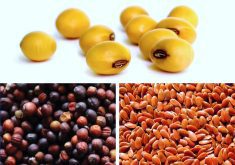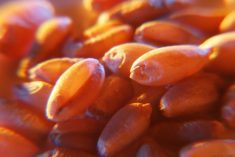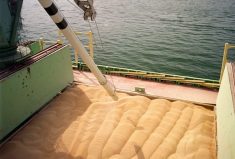Stocks of old crop wheat in Australia are becoming tight following a brisk export program that has seen Iran and Iraq become big buyers of Australian wheat, the country’s largest grain bulk handler said on June 16.
CBH, the farmer-owned group that handles most of the wheat in Western Australia, the country’s top exporting state, estimates that well over half the wheat available from the last harvest has already been exported, leaving some traders scrambling to cover short positions.
“Short sellers are paying premiums to cover positions as they’ve already committed to deliver wheat to mills in countries such as Indonesia,” said Tom Puddy, wheat marketing manager for CBH unit GrainPool.
Read Also

Brazil muscles into wheat market
Glacier FarmMedia – Canadian wheat exporters are facing a new competitor in their second biggest market. “The rapid emergence of…
Puddy estimates that more than half the 15.4 million tonnes available for export from the last harvest that ended in February has already been harvested.
The harvest yielded 21.4 million tonnes, of which about six million tonnes went into the domestic market. Puddy estimated carry-over stocks at about two million tonnes.
He said shipments since then had maintained a fast pace.
Puddy estimated that 1.6 million tonnes was exported in May and another 1.6 million tonnes in June, followed by around one million tonnes in July. A further 1.6 million tonnes has also been exported in containers.
About 7.5 million tonnes was exported between November and April.
Based on these estimates, 13.3 million tonnes of the available 15.4 million would have been exported by the end of July.
“The biggest thing is that the Australian market is short of wheat,” said Puddy. “I expect shipments in June and July to be heavy, but by September or October the market could be running out of Aussie wheat as carryover stocks are low.”
The next harvest starts in late October and could run through to February.
Australia’s government commodity forecaster estimated June 16 that the 2009/10 wheat harvest might rise 2.7 percent to 21.97 million tonnes as improved yields offset marginally lower planting to produce the best harvest since 2005/06.
Puddy confirmed government data that Iran and Iraq had been big buyers of Australian wheat along with Indonesia.
Between November and April Iran bought 1.4 million tonnes, Iraq bought 600,000 tonnes and Indonesia 1.2 million tonnes.
Since saying it wanted to boost wheat purchases from Australia three months ago, Iraq has been a frequent buyer, last week taking 100,000 tonnes from grain trader Glencore International at around $330-$340 per tonne CIF (cost, insurance and freight) for July-August shipment.
Puddy said Iraq had lowered the gluten specifications for its wheat imports which had meant lower-protein Australian Premium White (APW) wheat, grown in Western Australia, could now be sold in Iraq.
Previously, Iraq imported mainly Australian Prime Hard, grown on the east coast.














